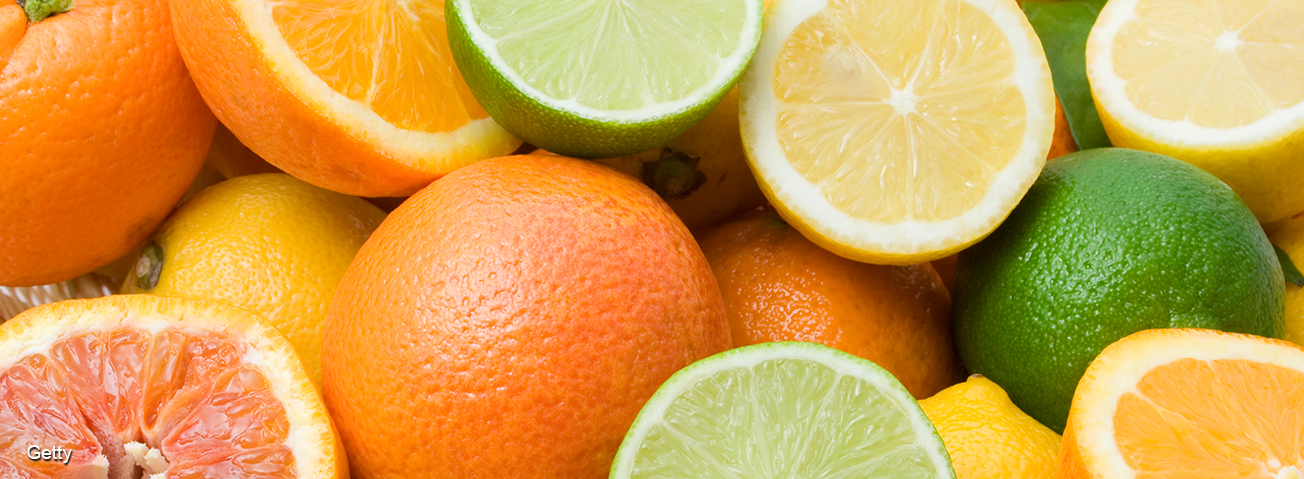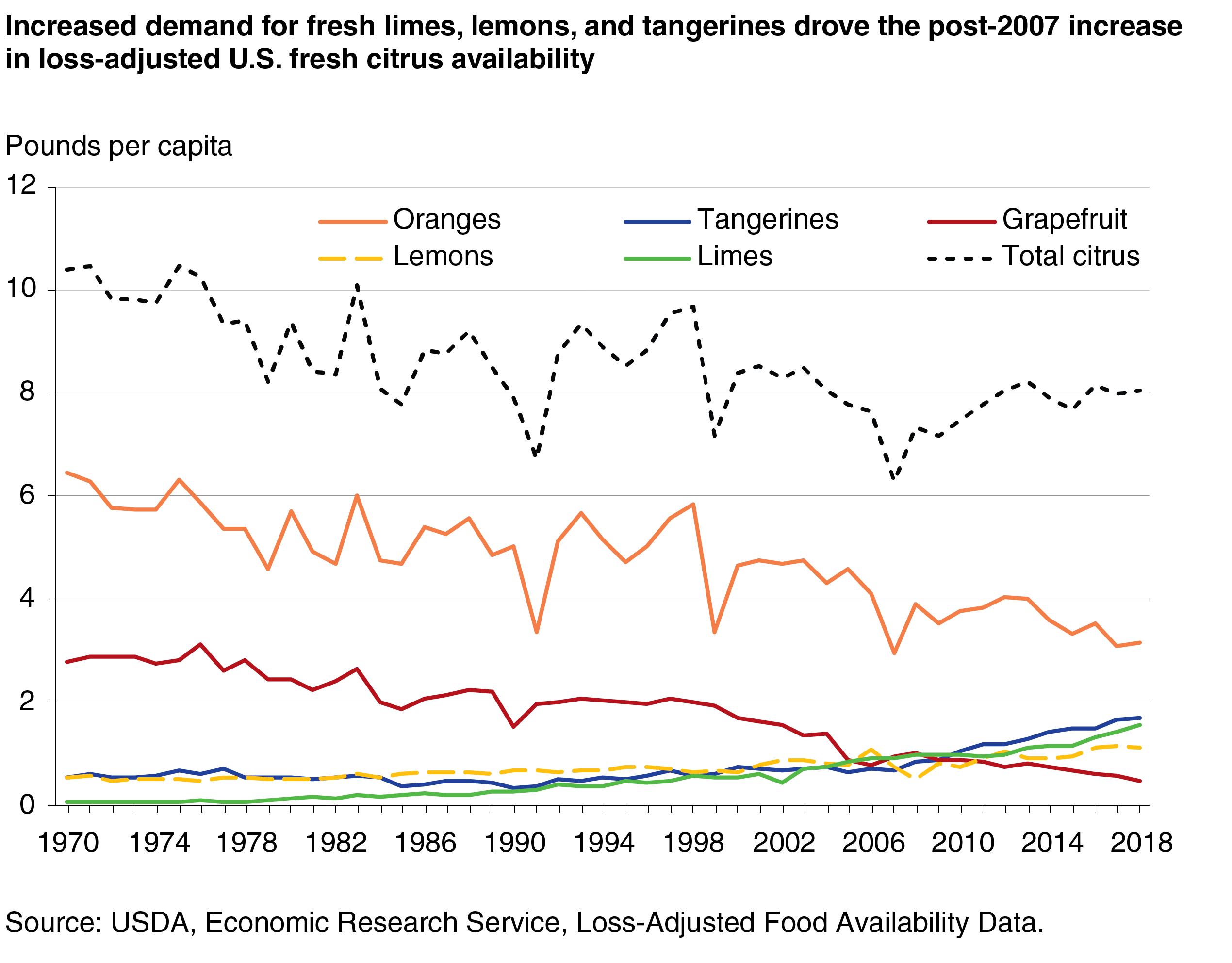
Citrus Fruits Accounted for 14 Percent of Fresh Fruits Available for Americans to Eat in 2018
- by Andrzej Blazejczyk
- 8/3/2020
USDA’s Economic Research Service (ERS) maintains an historical data series on national per capita supplies of over 200 food commodities available for domestic consumption. In 2018, the supply of fresh fruits available for Americans to eat, after adjusting for losses, totaled 58.3 pounds on a per capita basis. Citrus fruits accounted for 14 percent of this 2018 total, down from a 24-percent share in 1970, partly reflecting Americans’ expanded fresh fruit options. Loss-adjusted per capita availability of fresh citrus fruits fell to a low of 6.3 pounds in 2007 before trending upward to 8 pounds in 2018. Over 1970-2018, loss-adjusted per capita availability of fresh oranges and grapefruit declined, while availability of lemons, limes, and tangerines increased. The data in the ERS historical series predate the Coronavirus (COVID-19) pandemic and do not reflect its impacts on food supply chains and food demand.
ERS calculates national supplies of food commodities available for domestic consumption by adding domestic production, initial inventories, and imports of a particular commodity, such as oranges; then subtracting exports and end-of-year inventories. To calculate per capita estimates, these national supplies are divided by the U.S. population. For loss-adjusted availability, ERS applies commodity-specific loss rate estimates to account for some of the spoilage, plate waste, and other losses in food stores, restaurants, and households. Loss-adjusted food availability is designed to approximate consumption.
Year-to-year changes in loss-adjusted per capita availability of citrus fruits reflect production swings due to factors such as weather events (freezes or hurricanes), diseases (citrus greening, citrus canker, or citrus black spot), and changes to import or export volumes. Reduced supplies of oranges and grapefruit cause their prices to rise. Consumers and other buyers (food processors, foodservice companies, etc.) often respond to these rising prices by cutting back on their purchases of the now more expensive fruits.
Longer term trends in loss-adjusted per capita availability, however, are usually driven by changes in consumer demand that can result from price and non-price factors. Consumer demand influences producers’ decisions about what types of fruits should be grown and importers’ decisions about what types to import. Over 1970 to 2018, loss-adjusted per capita availability of oranges fell by 51 percent, though they were the most popular citrus fruit during this time. Grapefruit saw its popularity fall by 84 percent. Loss-adjusted per capita availability of other citrus fruits grew—lemons, for example, doubled; limes increased by 22 times.
Changes in consumer demand occur for a variety of reasons. Skipping breakfast or making it a “grab and go” meal is likely to reduce demand for fresh oranges and grapefruit. Additionally, grapefruit takes more effort to eat, especially when compared with easy-peel citrus fruits such as tangerines that are sweet in taste and smaller in size: this makes them a preferred “on the go” fruit choice. Studies have found that compounds in grapefruit negatively interact with certain medications, further reducing demand for grapefruit among some consumers. As for factors contributing to increased demand for lemons and limes over 1970 to 2018, one could be the growing popularity of Hispanic, Asian, and other cuisines that use these fruits.
This article is drawn from:
- Food Availability (Per Capita) Data System. (n.d.). U.S. Department of Agriculture, Economic Research Service.


